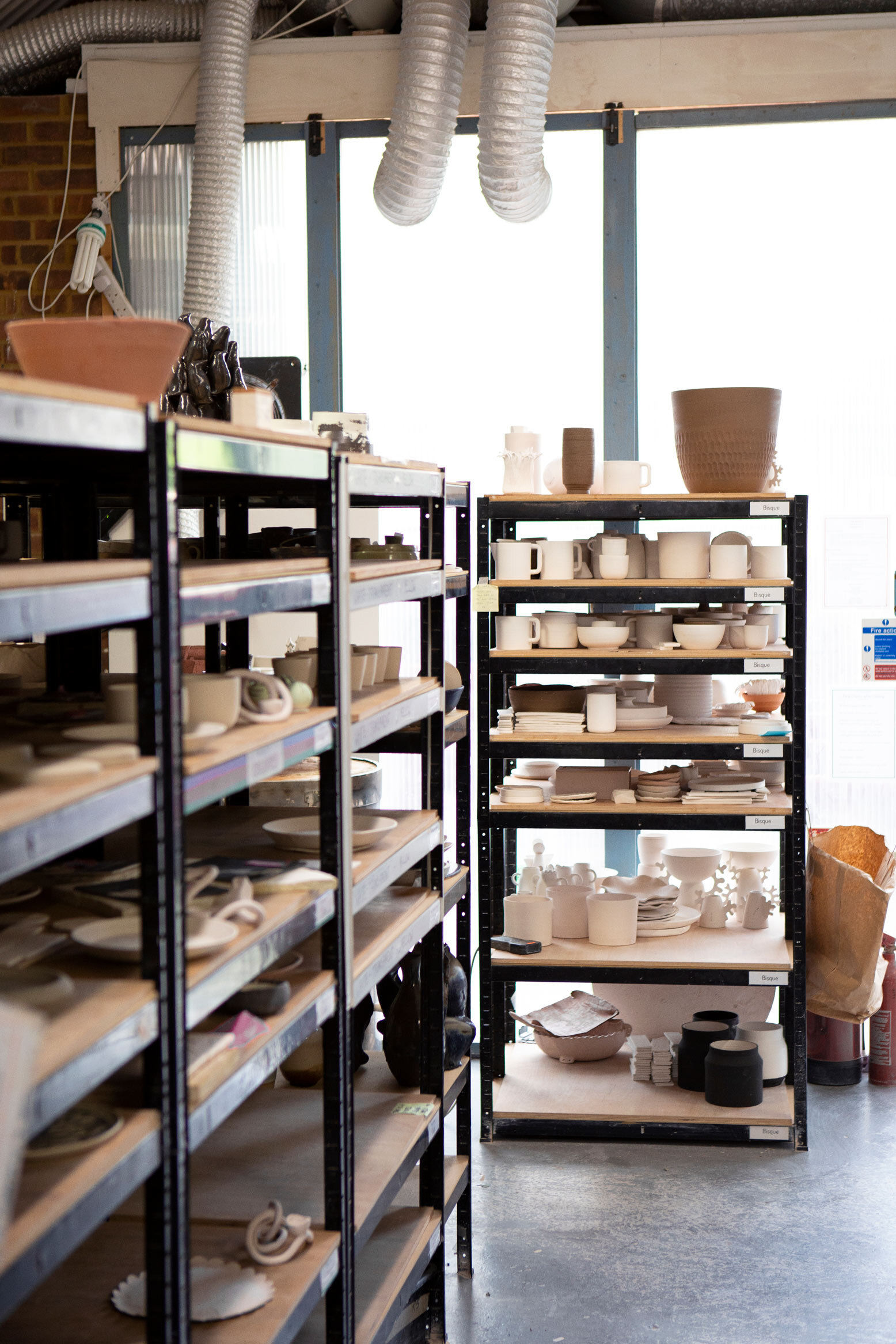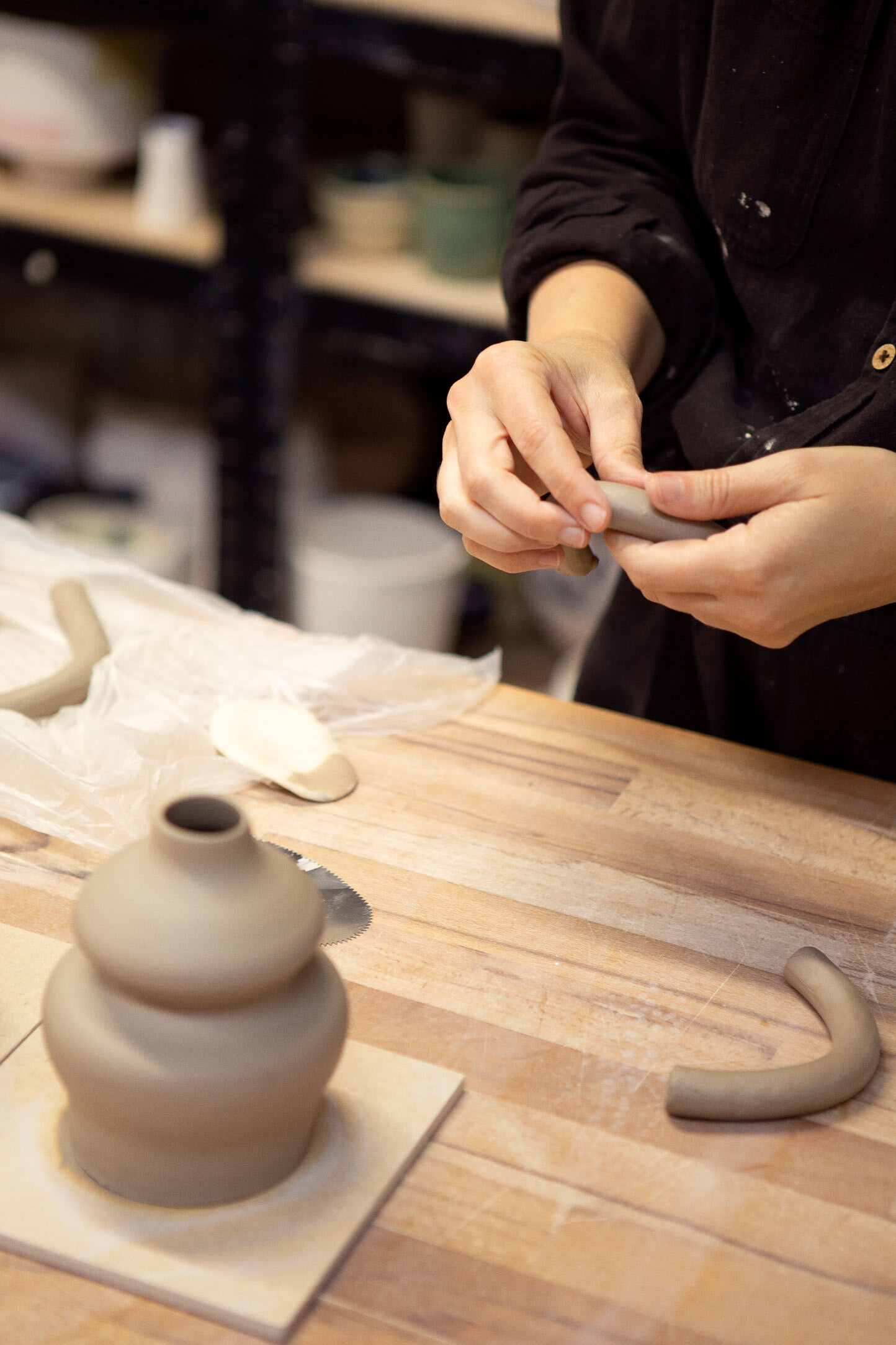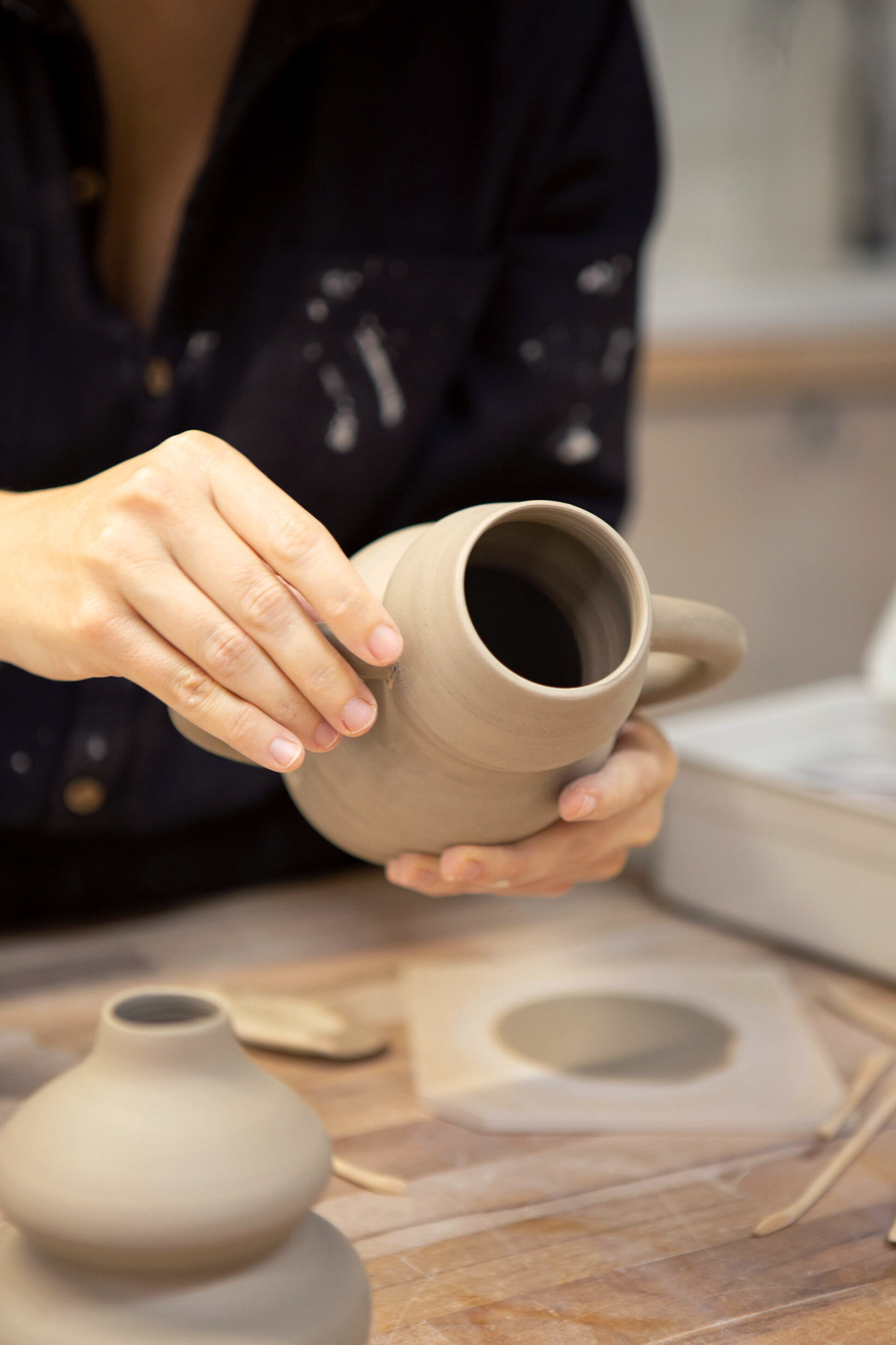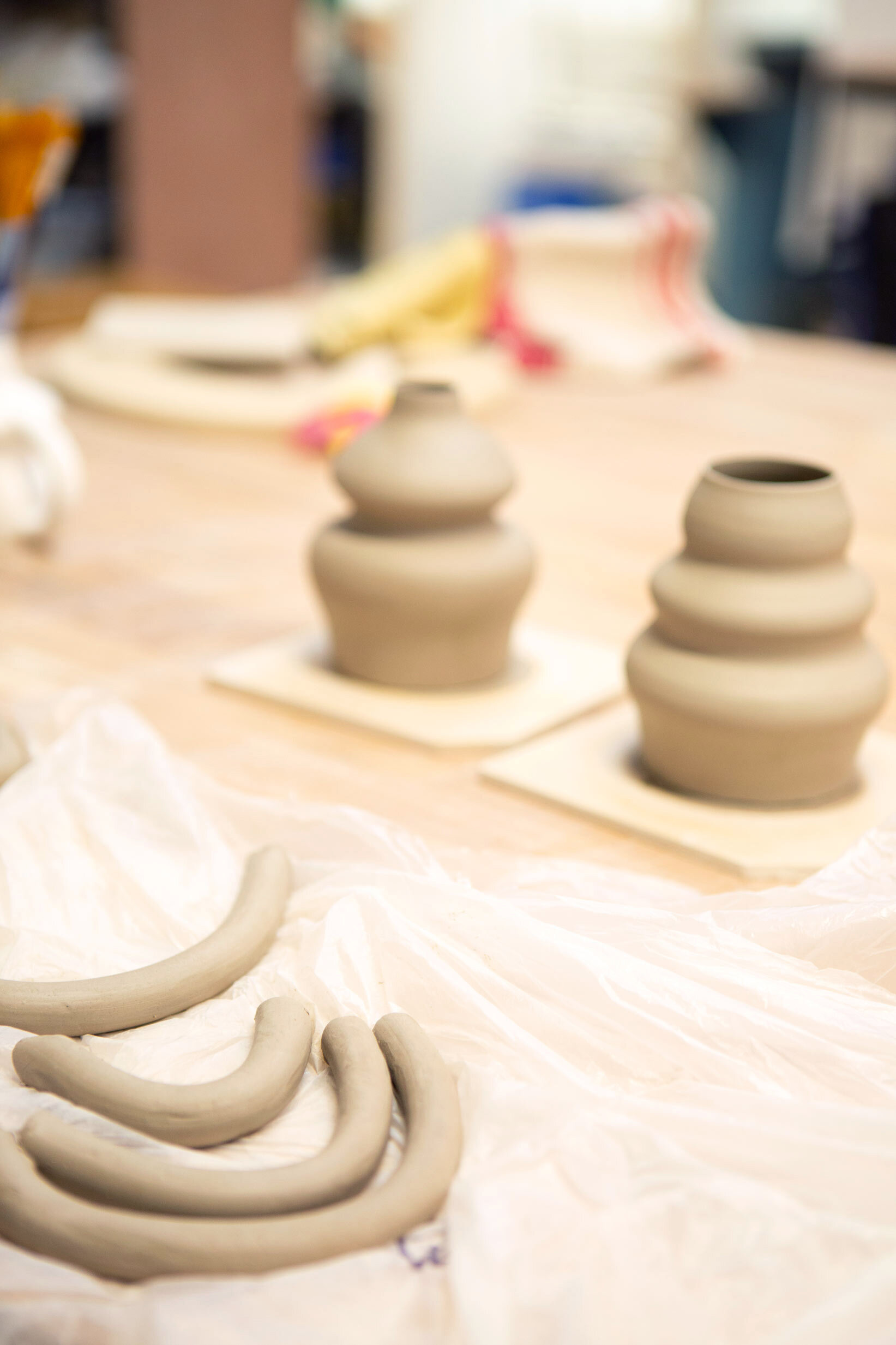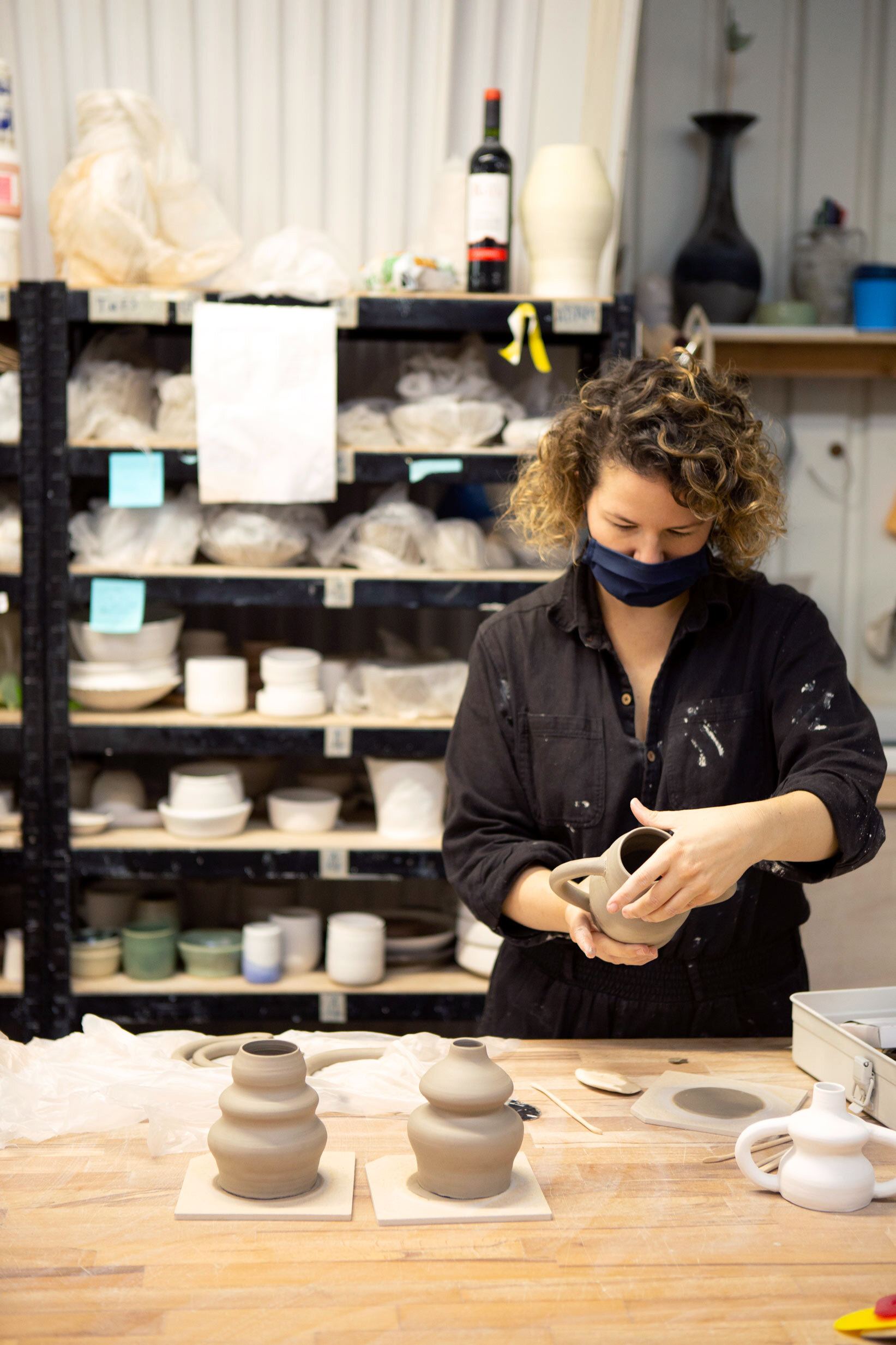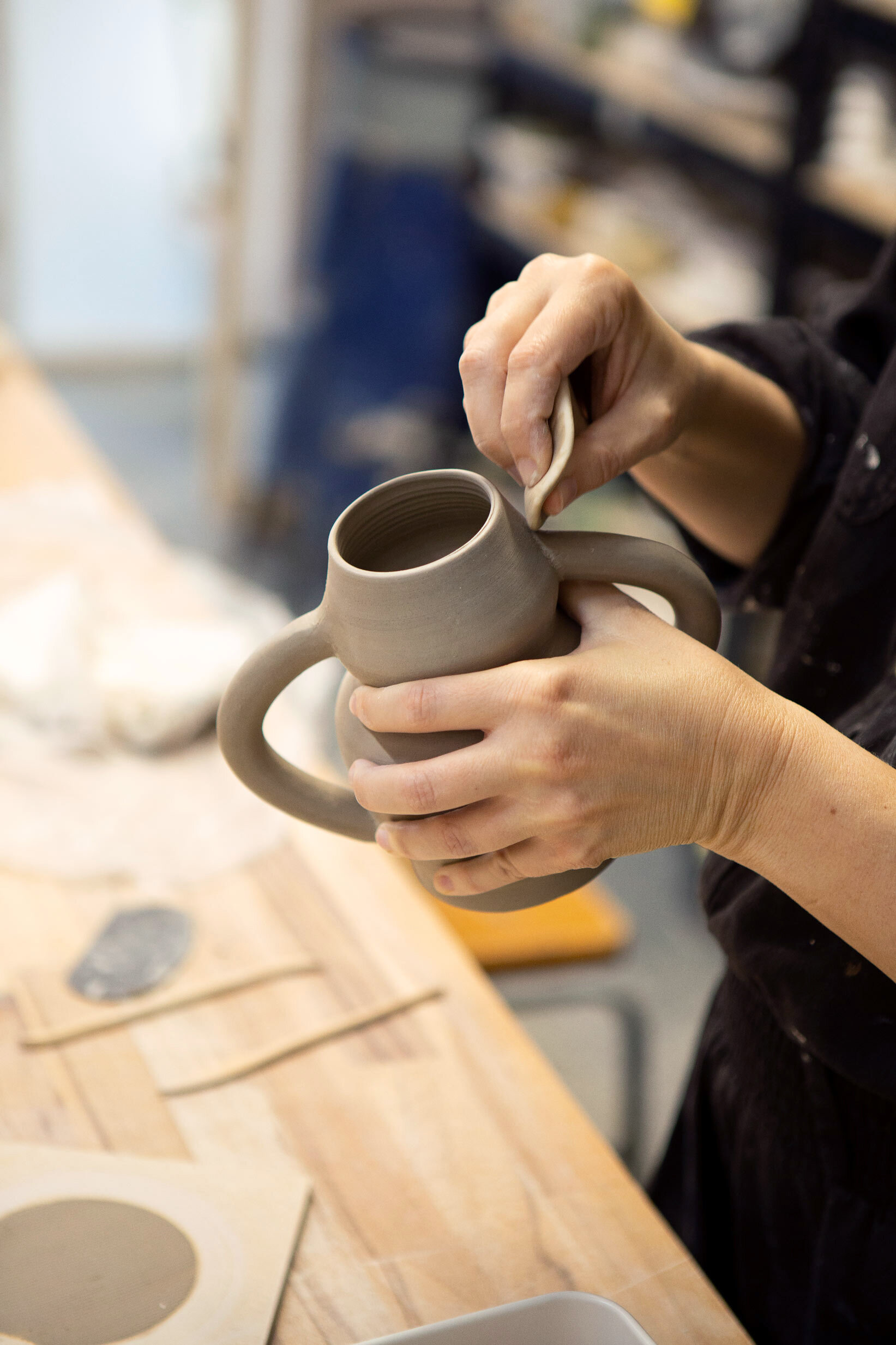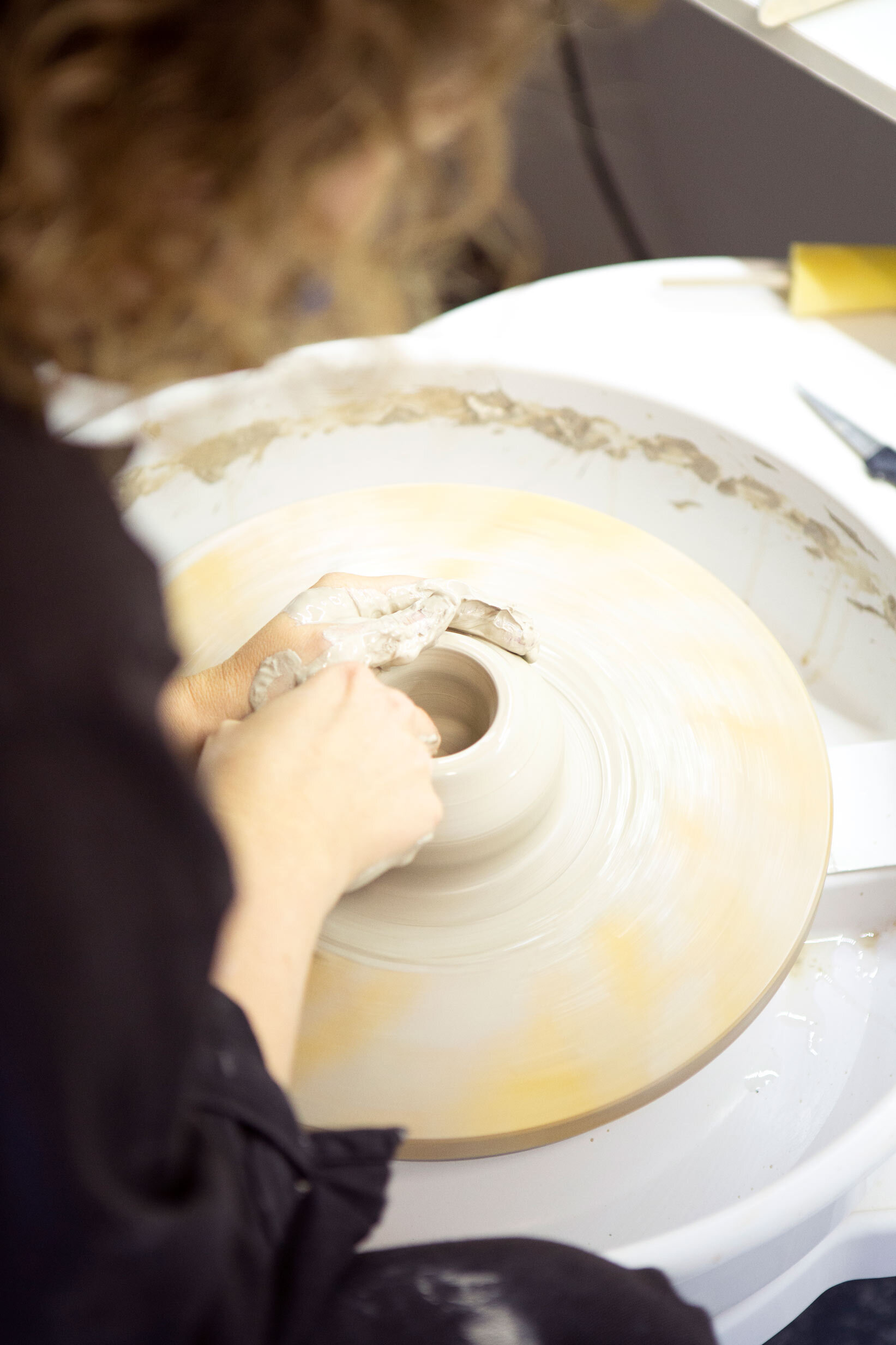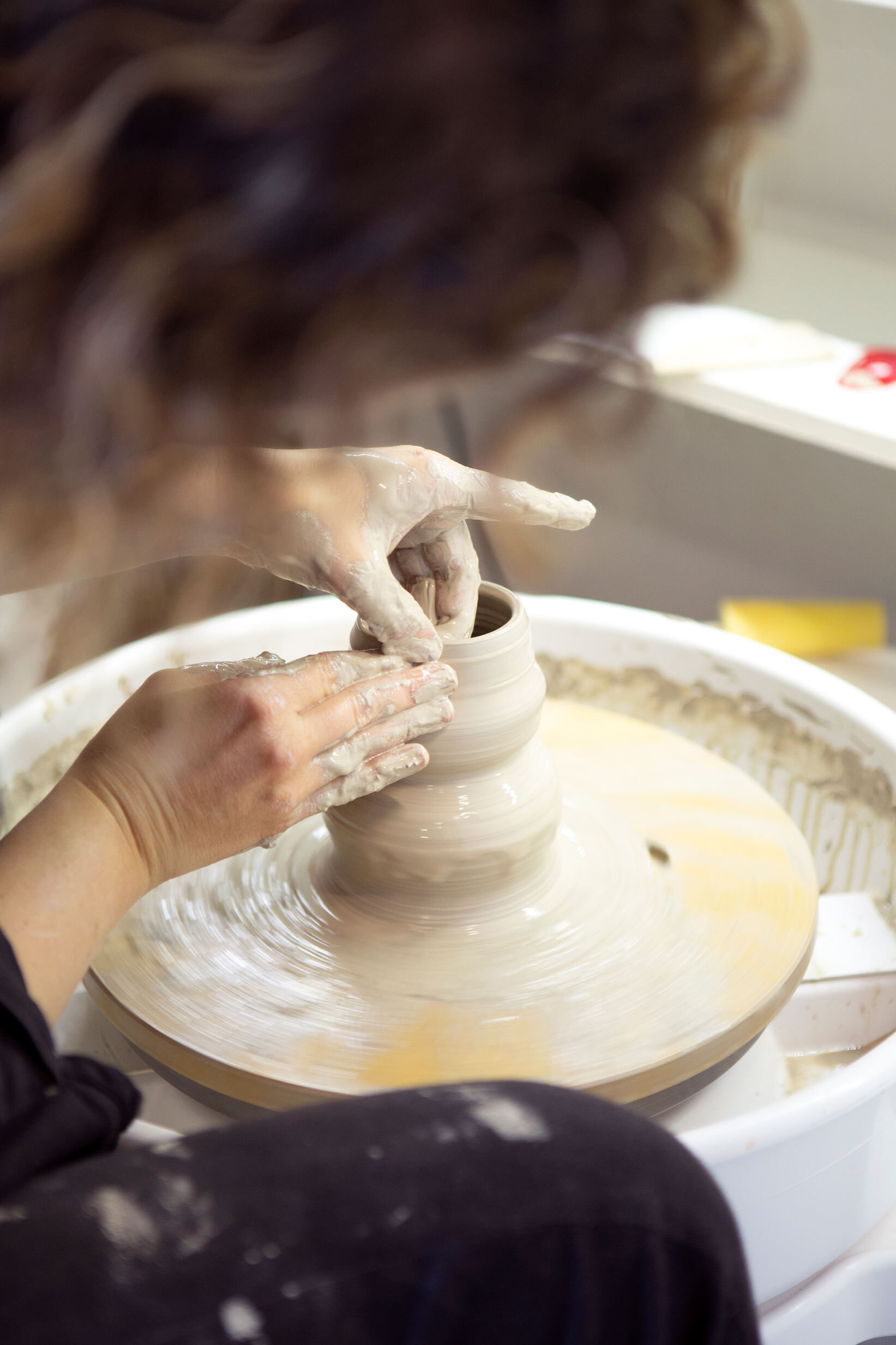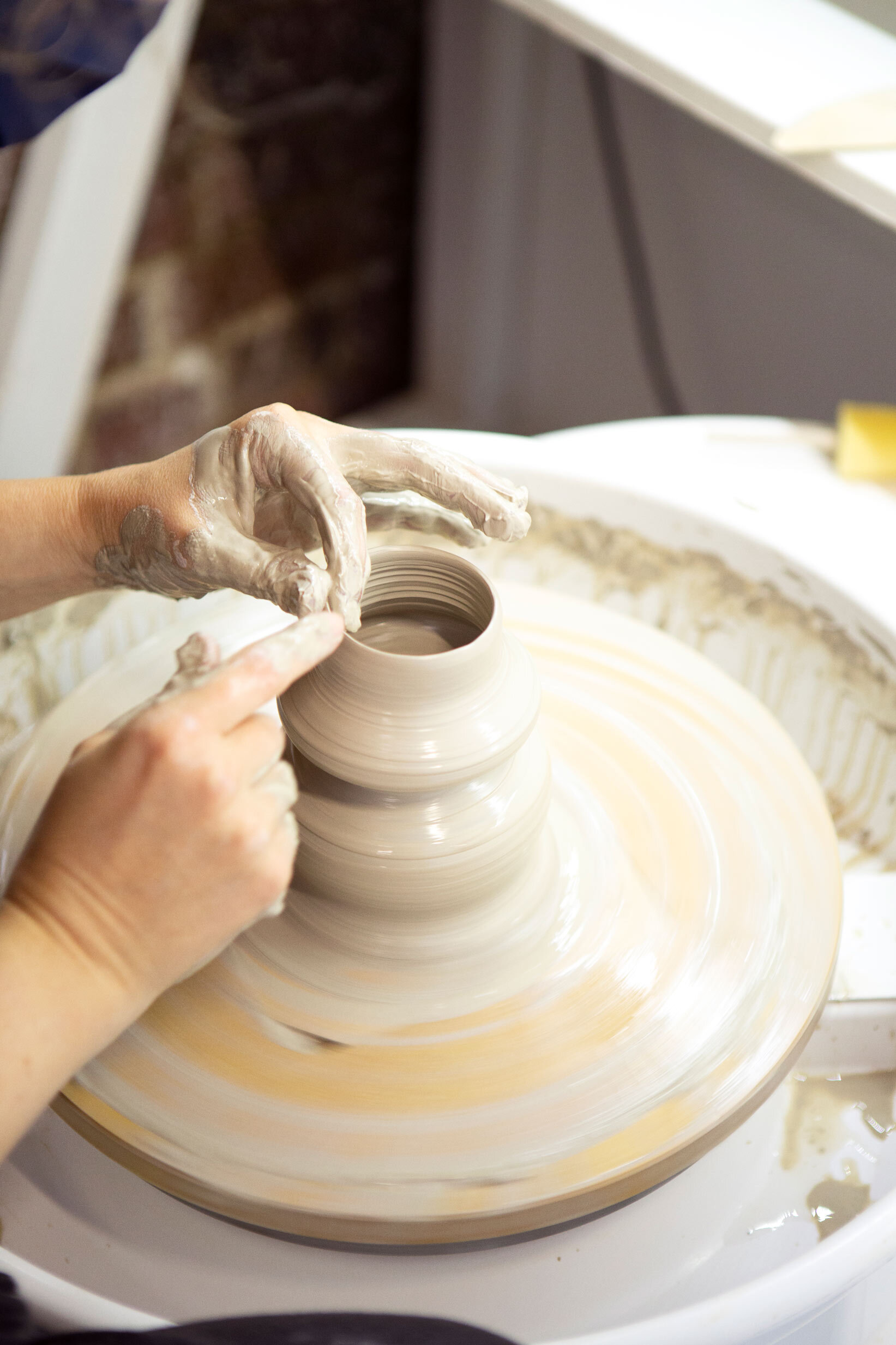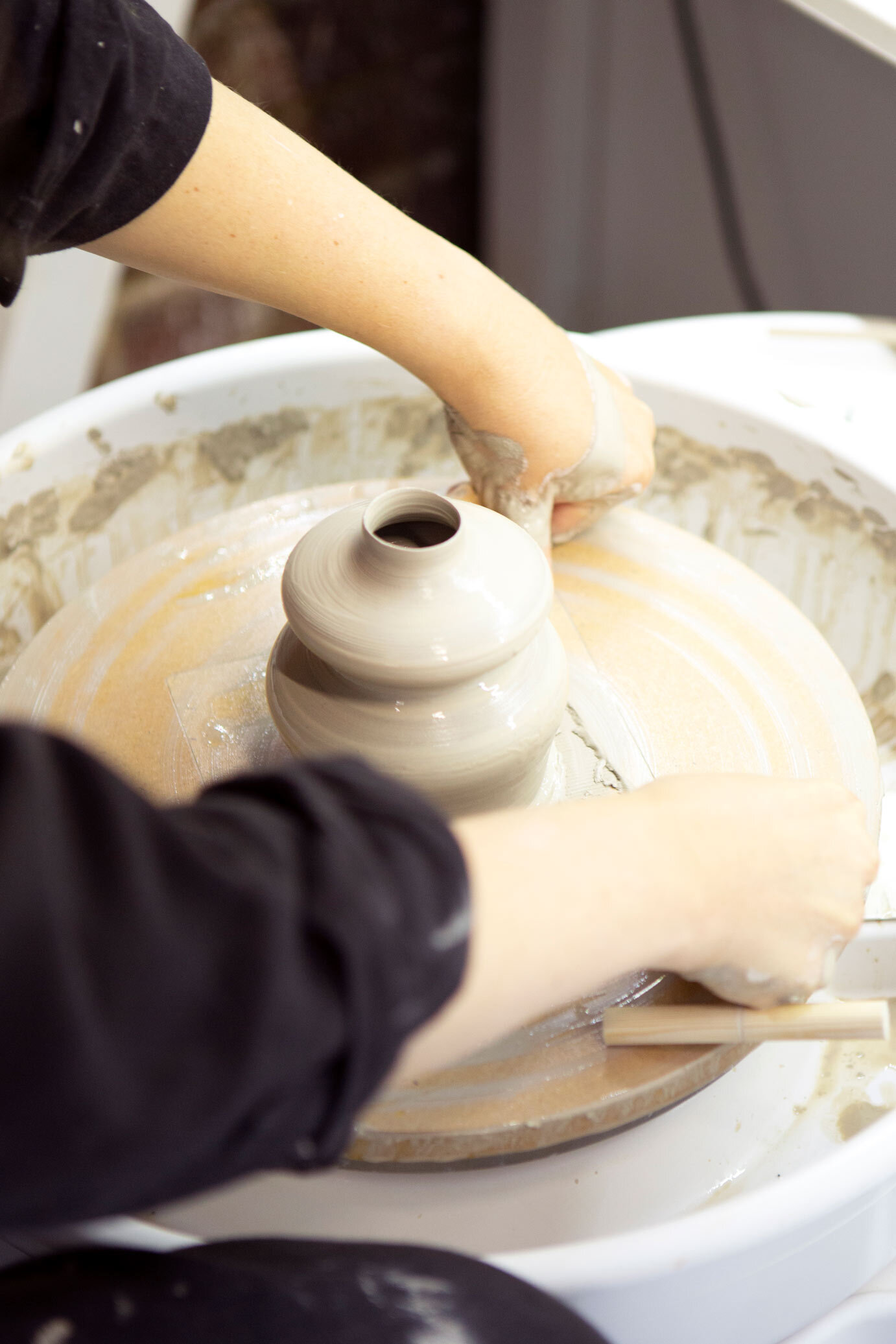Urban designer and ceramicist Victoria Wägner creates shapely vases informed by architecture and people
For ceramic artist Victoria Wägner, working with clay started as a creative relief from the intensity of her work – leading urban design projects. Utilising a combination of hand-built and thrown pottery techniques, the ceramicist creates functional tableware pieces along with her ongoing series of curved, clay vases.
After discovering ceramics could provide an expressive outlet for her ideas, the designer has refined her practice in recent years alongside a full-time position in the architectural industry.
Having worked at the same architecture studio for almost 10 years, Wägner has since flown solo – pursuing her own design practice simultaneously with her ceramics. Although holding a passion for both mediums, the artist’s ceramics practice allows her a certain individual freedom compared with the designer role. In contrast to detailed design strategies to meet both client needs and standards in the architectural industry, the ceramicist works with clay intuitively allowing the material to guide its structure.
She has a studio space in Peckham’s Kiln Rooms, an open-access ceramics workshop in south-east London. We’re lucky enough to see the ceramicist at work, creating new pieces by hand for her Sassy Vase collection. It’s interesting to see how each form takes shape on the wheel resulting in no two final works having the same outcome.
She explains how every vase develops its own (usually female) identity, and how she selects a song to accompany the character that emerges. “My sassy ladies started as a bit of an experiment, I was having quite a lot of fun just putting soundtracks to each of them. I could just imagine them quite quickly as different women.”
“I start with a rough idea of the final size in mind but creating the curves happens quite organically as I throw. When I add the handles that make up the arms, that's the key moment in deciding the personality of the piece.”
Noted for her inherent use of white and cobalt blue, Wägner references the vernacular architecture style of her Canary Islands upbringing. Growing up in the city of Las Palmas on the island of Gran Canaria, the designer draws influence from the constructions that line its streets. Designed to reflect the heat, the buildings feature as part of the island’s historical blend of architectural movements.
“I'm totally in love with this deep blue and I think I think it probably comes from the Canary Islands and from growing up there.”
“There's an artist called César Manrique who was from Lanzarote. He used black volcanic lava stone with white organic shapes, lots of plants – and the odd touch of deep blue. I think it comes from that pallete that I really love, combing the white, blue and black.”
César Manrique continues to influence both her urban design and ceramics practice. “He developed an architectural language for the whole of Lanzarote, he was all about sustainability back in the sixties and seventies before people were really talking about it. He championed the idea of building in a sensitive way that honoured both the landscape and the environment.”
“I've always been inspired both from a ceramics point of view and an urbanist point of view because it was all about the landscapes, respecting the landscape and working with it.”
The ceramicist reveals she finds subconscious links between her ceramics and urban design approaches – often making the connections after her pieces have taken shape. She has a particular interest in public space and enjoys observing how people interact with the materiality of the built environment, much like her own tactile relationship with clay.
“I often say I'm a professional people watcher, but you can gain so much from just observing and watching. A lot of urban design is quite human, and a big part of my work involves mapping a place out and trying to understand all its different layers. I've always enjoyed knowing what the materials and textures in a public space are and what things are made of.”
“With ceramics, I just wanted something to do with my hands. I found it therapeutic after being in an office all day. A lot of it is very intuitive like in my design role, but it's definitely more free. There’s something about using your hands, that I don’t get to do so much day-to-day so that’s what makes it really nice.”
“I often end up linking my work back to things after I make them. In my tableware I produce a lot of pieces featuring mark-making that reminds me of mapping and tracing lines – similar to in architecture.”
Since balancing her freelance urban design practice with her ceramics, Wägner reveals she definitely feels “more fulfilled.”
“I feel much more successful now and I think ceramics played a big role in that because I felt like that was a constant, creative outlet and allowed me not to get stuck. I feel like I’m always moving forward and I’m interested to continue the journey.”
See more of Victoria Wägner’s work here.

